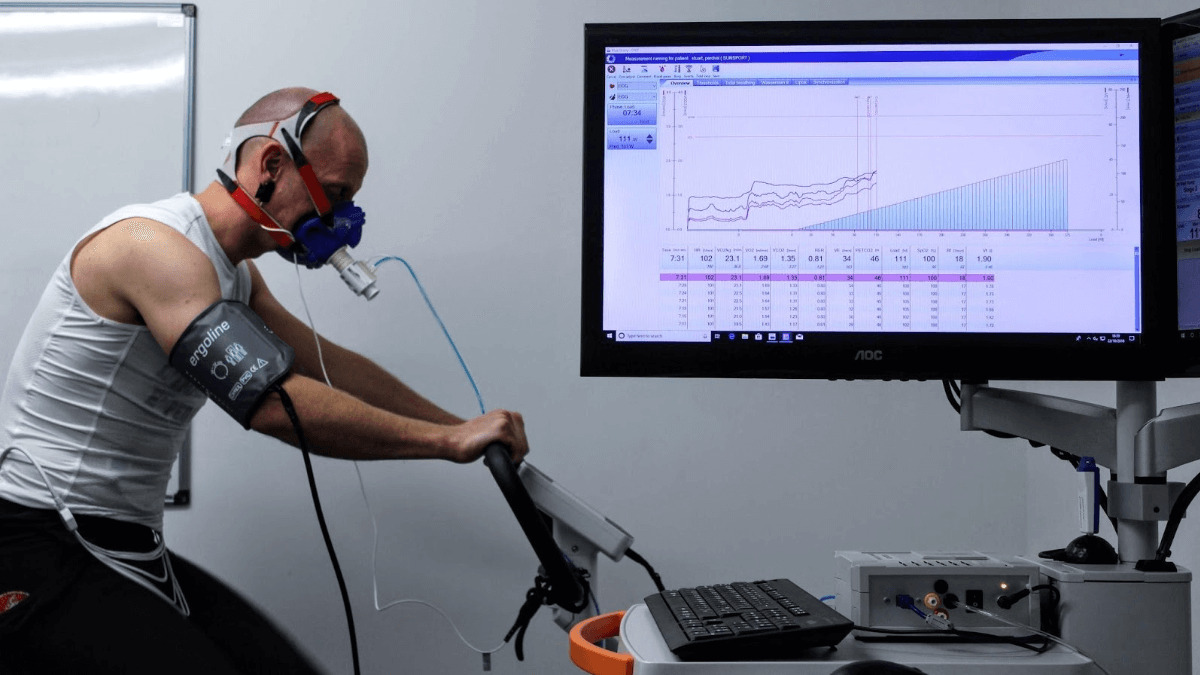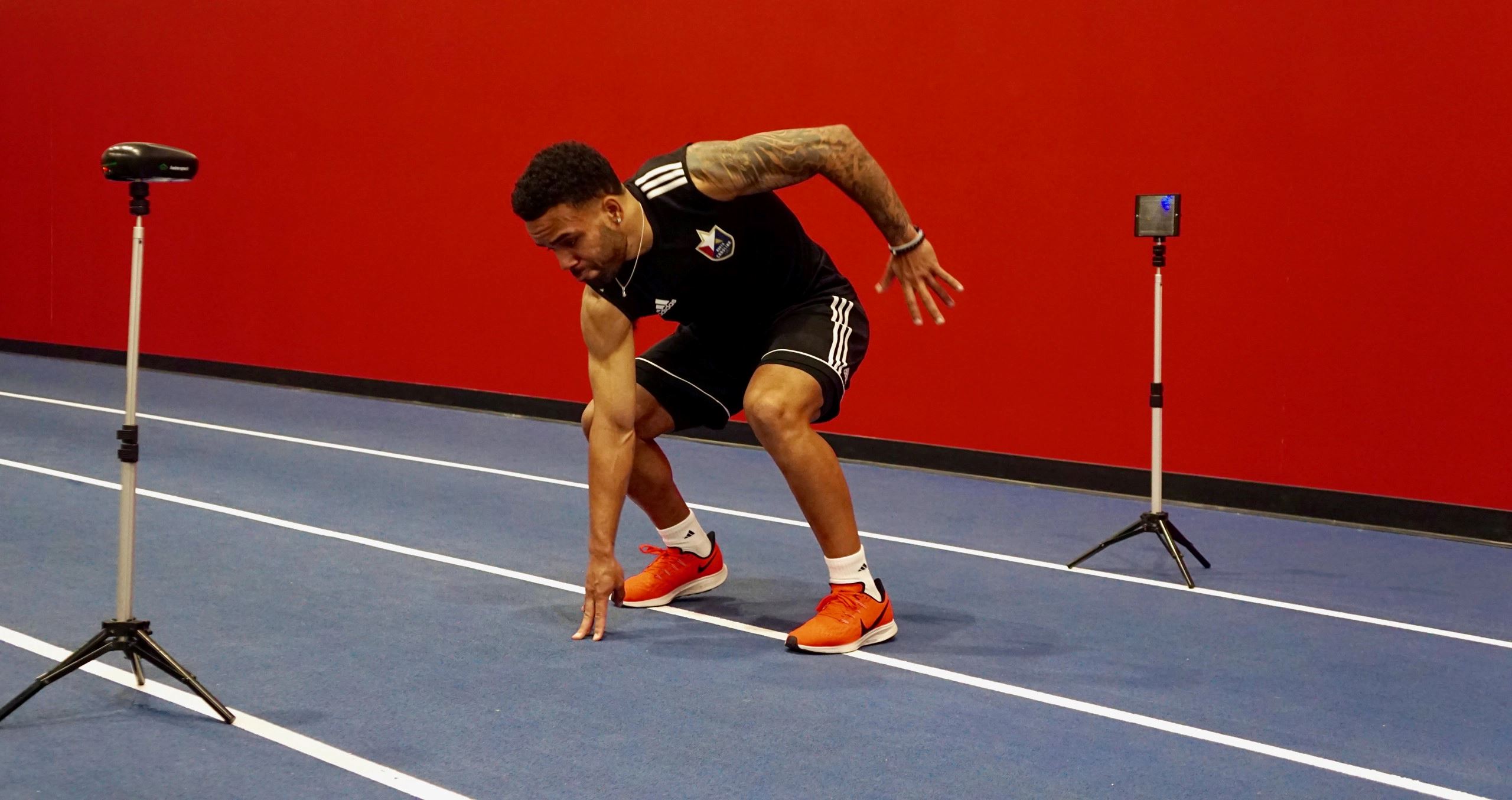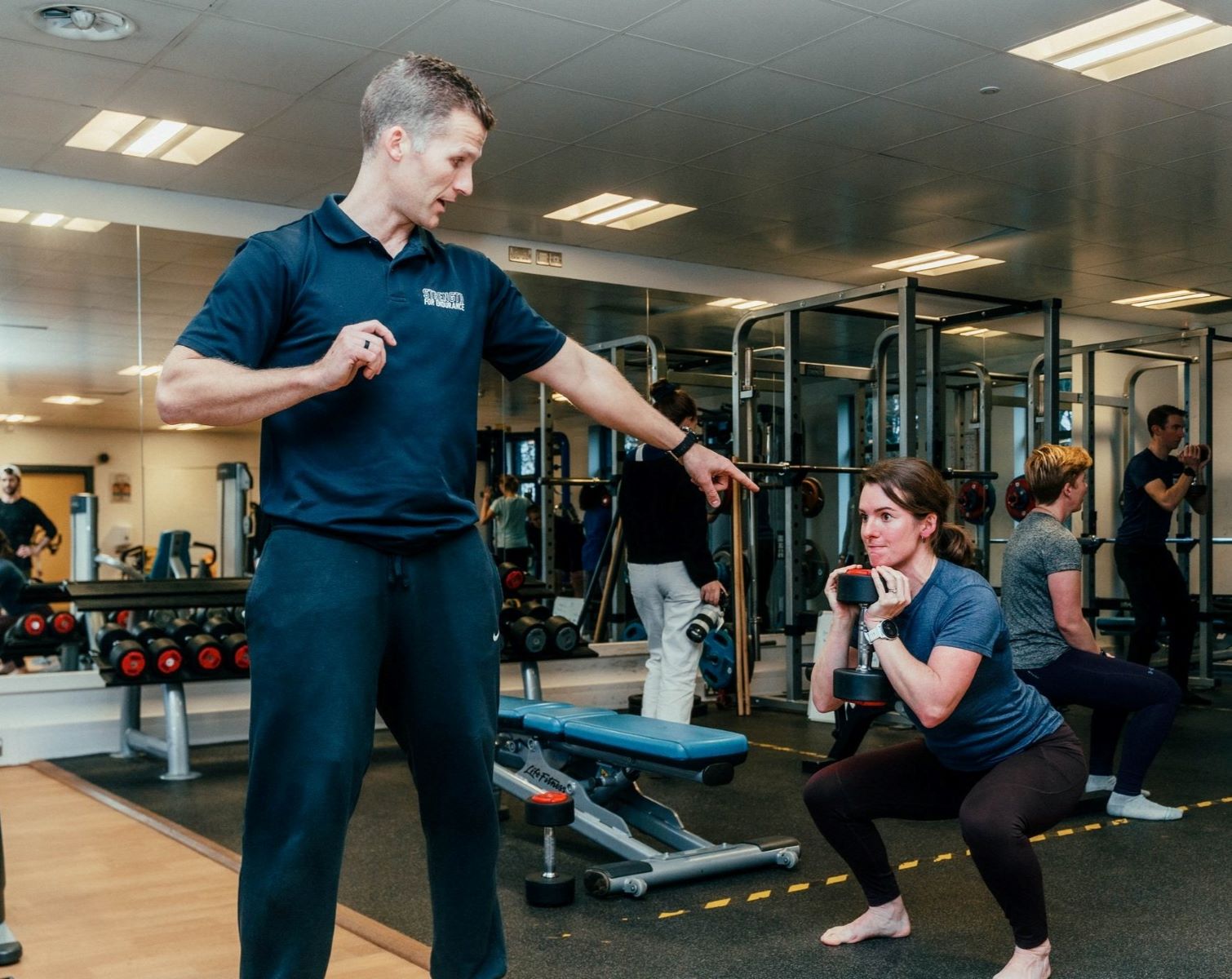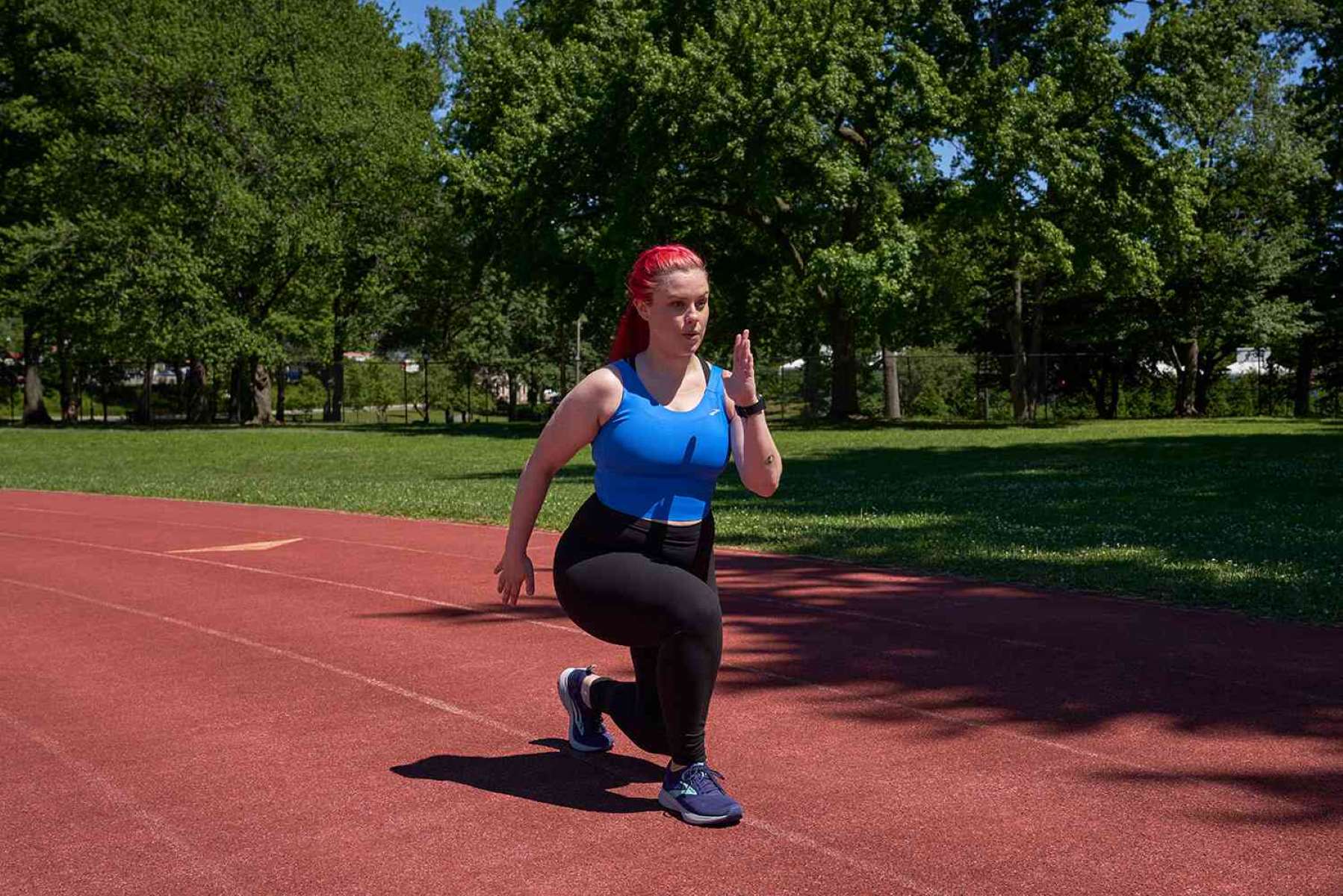Home>Misc>Featured>What FitnessGram Test Measures Cardiovascular Endurance


Featured
What FitnessGram Test Measures Cardiovascular Endurance
Modified: October 24, 2023
Improve your cardiovascular endurance with the featured Fitnessgram Test. Measure your fitness level and track progress to reach your fitness goals.
Introduction
Welcome to the world of fitness and endurance! If you’re someone who enjoys staying active or is interested in improving their overall fitness level, understanding the concept of cardiovascular endurance is essential. Achieving optimal cardiovascular endurance not only improves your stamina during physical activities, but it also offers a myriad of health benefits that contribute to a better quality of life.
In this article, we will delve into the world of cardiovascular endurance and explore its significance in fitness. Additionally, we will take a closer look at the Fitnessgram test, a widely recognized assessment tool used to measure cardiovascular endurance. Whether you’re a seasoned athlete or just beginning your fitness journey, the knowledge shared here will empower you to make informed decisions and embark on a path to better overall health.
Cardiovascular endurance, also known as aerobic endurance, refers to the ability of the cardiovascular system to supply oxygen to the working muscles during prolonged physical activity. This involves the efficient functioning of the heart, lungs, and blood vessels, enabling them to deliver oxygen-rich blood to the muscles.
The cardiovascular system, consisting of the heart, blood vessels, and respiratory system, plays a crucial role in sustaining physical activity. When you engage in activities like running, swimming, or cycling, your muscles need a constant supply of oxygen to produce energy. A person with good cardiovascular endurance can sustain these activities for extended periods without experiencing excessive fatigue.
The importance of cardiovascular endurance in fitness cannot be overstated. It serves as a foundation for performance in various sports, from long-distance running to team sports like soccer and basketball. Endurance training not only improves your ability to perform these activities at a higher intensity but also reduces the risk of injury and promotes overall well-being.
By participating in endurance training, you can enhance your body’s aerobic capacity, increase the volume and efficiency of blood pumped by the heart per beat, strengthen the respiratory system, and improve oxygen delivery to the muscles. These adaptations result in improved endurance performance, reduced fatigue, and better overall cardiovascular health.
Definition of Cardiovascular Endurance
Cardiovascular endurance, also known as aerobic endurance, refers to the ability of the cardiovascular system to sustain physical activity for extended periods without experiencing excessive fatigue. It is a key component of physical fitness and plays a critical role in various athletic and everyday activities.
When we engage in exercise or any form of physical exertion, our muscles require a constant supply of oxygen to produce energy. Cardiovascular endurance is determined by the efficiency of the cardiovascular system in delivering oxygen to the working muscles. This involves the coordination of the heart, lungs, and blood vessels to transport oxygen-rich blood throughout the body.
During aerobic activities, such as running, swimming, or cycling, the heart pumps oxygenated blood to the working muscles, while the lungs supply fresh oxygen and remove carbon dioxide. The efficiency of this process depends on factors such as heart health, lung capacity, and the ability of the blood vessels to deliver oxygen to the muscles.
By improving cardiovascular endurance, individuals can perform physical tasks at higher intensities and for longer durations. It allows athletes to sustain their energy levels throughout a match, race, or game, while also aiding in activities of daily living, such as climbing stairs or carrying groceries.
Measuring cardiovascular endurance is crucial to evaluate an individual’s fitness level and identify areas for improvement. Various assessment methods can be used, ranging from simple field tests to more sophisticated laboratory-based measurements.
Overall, cardiovascular endurance is a fundamental aspect of physical fitness that contributes to better performance, increased stamina, and improved overall health. By developing and maintaining a good level of cardiovascular endurance, individuals can enjoy a higher quality of life, engage in physical activities with ease, and reduce the risk of cardiovascular diseases.
Importance of Cardiovascular Endurance
Cardiovascular endurance is a crucial component of physical fitness and plays a vital role in maintaining overall health and well-being. Here are some key reasons why cardiovascular endurance is important:
1. Enhanced Stamina: Increasing cardiovascular endurance improves your stamina and ability to perform physical activities for longer durations without excessive fatigue. Whether it’s running a marathon or simply keeping up with the demands of daily life, having good cardiovascular endurance allows you to stay active and maintain your energy levels.
2. Improved Heart Health: Regular cardiovascular exercise strengthens your heart muscle, allowing it to pump blood more efficiently. As a result, your resting heart rate decreases, blood pressure improves, and the risk of cardiovascular diseases, such as heart attacks and strokes, is reduced.
3. Weight Management: Engaging in aerobic exercise, which improves cardiovascular endurance, helps in burning calories and maintaining a healthy weight. It increases metabolism, which allows the body to burn fat even during rest. Incorporating cardiovascular exercise into your routine can contribute to long-term weight management.
4. Mental Well-being: Physical activity, especially aerobic exercise, has been linked to improved mental health. Regular cardiovascular exercise releases endorphins, which are known as “feel-good” hormones, promoting a positive mood, reducing stress and anxiety, and enhancing overall mental well-being.
5. Disease Prevention: Having good cardiovascular endurance is associated with a lower risk of chronic diseases, including cardiovascular disease, diabetes, and certain types of cancer. Regular exercise improves blood circulation, reduces inflammation, and boosts the immune system, protecting against various health conditions.
6. Increased Longevity: Research has shown a strong correlation between cardiovascular endurance and longevity. Maintaining good cardiovascular fitness levels can extend your lifespan, allowing you to enjoy a more active and fulfilling life as you age.
By prioritizing cardiovascular endurance through regular exercise, individuals can reap these benefits and improve their overall quality of life. Whether your goal is to compete in sports, maintain a healthy weight, or simply improve your well-being, investing in cardiovascular endurance training is key.
Fitnessgram Test Overview
The Fitnessgram test is a comprehensive assessment tool used to measure various components of physical fitness, including cardiovascular endurance. It is widely utilized in schools, fitness centers, and sports organizations to evaluate individuals’ fitness levels and track their progress over time.
Developed by The Cooper Institute, the Fitnessgram test provides a standardized and objective approach to assessing fitness. It is designed to provide valuable information about an individual’s overall health and fitness, helping educators, coaches, and individuals make informed decisions regarding their exercise programs and fitness goals.
The Fitnessgram test consists of several components that assess different facets of physical fitness, including cardiovascular endurance, muscular strength, muscular endurance, flexibility, and body composition. Each component has specific standards and guidelines that provide a benchmark for evaluating individual fitness levels.
When it comes to measuring cardiovascular endurance, the Fitnessgram test utilizes the PACER (Progressive Aerobic Cardiovascular Endurance Run) test. The PACER test is a multistage aerobic capacity test, requiring individuals to run back and forth between two markers placed 20 meters apart at an increasing pace.
During the PACER test, participants need to keep up with a series of audio cues that indicate when to start running and change direction. The test begins at a moderate pace, gradually increasing in speed every minute. The goal is to complete as many laps as possible before reaching their maximum effort and being unable to keep up with the audio cues.
The Fitnessgram test assesses cardiovascular endurance based on the results of the PACER test, comparing an individual’s performance to age and gender-specific standards. The test results provide valuable information on an individual’s aerobic capacity and can serve as motivation to improve cardiovascular endurance through targeted training.
It’s important to note that the Fitnessgram test is not just about performance evaluation but also about promoting a positive and inclusive approach to fitness. The goal is to encourage individuals of all fitness levels to participate, set personal goals, and work towards improving their overall fitness and well-being.
By implementing the Fitnessgram test, educators and fitness professionals can gain insights into individuals’ physical fitness and tailor their exercise programs to meet specific needs. Additionally, individuals can use the test results as a benchmark to track their progress and set realistic goals for improving cardiovascular endurance and overall fitness.
Components of the Fitnessgram Test
The Fitnessgram test consists of various components that provide a comprehensive assessment of an individual’s physical fitness. By evaluating multiple aspects of fitness, this test offers a holistic view of an individual’s overall health and well-being. Here are the key components of the Fitnessgram test:
- Cardiovascular Endurance: This component measures the efficiency of the cardiovascular system in delivering oxygen to the working muscles during prolonged physical activity. It is assessed using the PACER test, which evaluates an individual’s aerobic capacity and endurance.
- Muscular Strength and Endurance: This component assesses an individual’s muscle strength by performing exercises like push-ups, flexed-arm hang, or handgrip strength. Muscular endurance is evaluated through activities such as curl-ups or plank exercises, gauging the endurance and stamina of the muscles.
- Flexibility: Flexibility is a crucial element of physical fitness that assesses an individual’s range of motion in various joints. The Fitnessgram test measures flexibility through exercises like the sit-and-reach test, which evaluates the flexibility of the hamstring and lower back muscles.
- Body Composition: This component examines the proportion of body fat to lean body mass. It is assessed using methods such as skinfold measurements or body mass index (BMI) calculations to determine overall body composition.
- Other Assessments: In addition to the key components mentioned above, the Fitnessgram test may include additional assessments like the plank test to evaluate core stability or the sit-up test to assess abdominal strength and endurance. These assessments provide further insights into an individual’s overall physical fitness.
By evaluating these components, the Fitnessgram test provides a comprehensive snapshot of an individual’s physical fitness level. The results allow individuals, educators, and fitness professionals to identify areas of strength and areas that may require improvement. This information is invaluable in designing personalized exercise programs and setting realistic fitness goals.
It’s important to note that the Fitnessgram test emphasizes the importance of overall fitness rather than focusing solely on performance. The goal is to promote a positive and inclusive approach to fitness, encouraging individuals to embrace all aspects of physical activity and strive for a well-rounded level of fitness.
Through this holistic evaluation, the Fitnessgram test aims to empower individuals to take control of their fitness journey, make informed decisions, and adopt a healthy and active lifestyle. By recognizing and addressing individual strengths and areas for improvement, individuals can work towards achieving optimal physical fitness and overall well-being.
Test Procedure
The Fitnessgram test follows a standardized procedure to ensure consistency and accuracy in assessing an individual’s fitness levels. Here is an overview of the test procedure:
- Preparation: Before conducting the Fitnessgram test, it is important to ensure the participants are adequately prepared. This includes providing clear instructions about the test components, demonstrating proper technique for each exercise, and allowing ample warm-up time to prevent injuries.
- Cardiovascular Endurance (PACER Test): The test begins with the assessment of cardiovascular endurance using the PACER test. Participants line up at a starting point and run back and forth between two markers placed 20 meters apart. They are required to keep up with the audio cues indicating the pace, which gradually increases every minute. The test continues until the individual reaches their maximal effort and can no longer maintain the pace.
- Muscular Strength and Endurance: Following the cardiovascular endurance component, participants move on to the muscular strength and endurance assessments. This may involve exercises like push-ups, flexed-arm hang, or handgrip strength, depending on the individual’s age and ability level. Participants perform the exercises with proper form and within the designated time or repetition range.
- Flexibility: The flexibility component of the Fitnessgram test focuses on assessing the range of motion in various joints. The sit-and-reach test is commonly used, where participants sit with their legs extended and reach forward to measure the flexibility of their hamstring and lower back muscles.
- Body Composition: The body composition component evaluates the proportion of body fat to lean body mass. Measurements can be taken using methods such as skinfold calipers or body mass index (BMI) calculations. These assessments provide insight into an individual’s body composition and overall health status.
- Data Recording: Throughout the test, it is essential to accurately record the data for each component. This includes the number of laps achieved in the PACER test, the number of repetitions or time completed in muscular strength and endurance exercises, and the measurements obtained in the flexibility and body composition assessments.
It’s important to note that the Fitnessgram test is usually administered by trained professionals, such as physical educators, fitness instructors, or healthcare providers. These individuals ensure that proper techniques are followed, and safety precautions are in place for all participants.
By following a standardized procedure and accurately recording data, the Fitnessgram test provides valuable information about an individual’s fitness levels. This data serves as a baseline for assessing progress, setting goals, and designing tailored exercise programs to improve overall fitness and well-being.
Interpretation of Results
Interpreting the results of the Fitnessgram test is an important step in understanding an individual’s fitness levels and identifying areas for improvement. Here is the general process for interpreting the test results:
- Comparing to Standards: The Fitnessgram test provides age and gender-specific standards for each component of the test. These standards serve as a reference point for evaluating an individual’s performance. Results are typically classified into different categories, such as “Healthy Fitness Zone,” “Needs Improvement,” or “High Risk,” based on how they compare to these standards.
- Identifying Areas of Strength: The results of the Fitnessgram test can help identify areas where an individual excels. For example, if someone achieves a high score in cardiovascular endurance, it indicates that they have good aerobic capacity and endurance. These areas of strength can be acknowledged and celebrated, providing motivation and reinforcement to continue maintaining and improving fitness levels in those areas.
- Highlighting Areas for Improvement: The test results also shed light on areas where an individual may need to focus on improvement. For instance, if someone’s muscular strength or flexibility falls below the healthy fitness zone, it suggests the need for targeted training in those areas to improve overall fitness. Identifying these areas for improvement enables individuals and fitness professionals to develop specific exercise programs that address these weaknesses.
- Setting Realistic Goals: Based on the test results, individuals can set realistic fitness goals. By acknowledging the areas that need improvement and understanding the benchmarks provided by the Fitnessgram standards, individuals can establish specific, measurable, attainable, relevant, and time-bound (SMART) goals. These goals provide direction, motivation, and a sense of achievement when progress is made.
- Tracking Progress: The Fitnessgram test results serve as a baseline for tracking an individual’s progress over time. Regular reassessment allows individuals to monitor improvements in fitness levels and evaluate the effectiveness of their exercise programs. It also provides motivation to stay committed to their fitness journey and make adjustments as needed.
Interpreting the Fitnessgram test results should be done with a holistic approach, considering all the components of physical fitness. It’s important to remember that while the results provide valuable information, they do not define an individual’s worth or potential. The focus should be on continuous improvement, maintaining a balanced approach to fitness, and striving for overall well-being.
By interpreting the Fitnessgram test results in a constructive and positive manner, individuals can gain valuable insights into their fitness levels, set realistic goals, and develop personalized strategies to enhance their overall fitness and lead healthier, more active lives.
Factors Affecting Cardiovascular Endurance
Cardiovascular endurance, as with any fitness component, can be influenced by a variety of factors. Understanding these factors can provide insight into why individuals may have different levels of cardiovascular endurance. Here are some key factors that can affect cardiovascular endurance:
- Genetics: Genetic factors play a role in determining an individual’s baseline cardiovascular endurance. Some people may be genetically predisposed to having higher or lower levels of cardiovascular fitness. However, it’s important to note that genetics are just one piece of the puzzle, and with proper training and lifestyle modifications, individuals can make improvements regardless of their genetic makeup.
- Age: Cardiovascular endurance tends to naturally decline with age. As we get older, our heart and lungs may not function as efficiently, and our muscles may experience decreased oxygen uptake. Regular exercise and maintaining an active lifestyle can help slow down this natural decline and preserve cardiovascular endurance.
- Training and Exercise Habits: Regular aerobic exercise is the key to improving and maintaining cardiovascular endurance. Consistent training and engaging in activities that challenge the cardiovascular system, such as running, cycling, swimming, or dancing, can significantly enhance endurance. On the other hand, a sedentary lifestyle or lack of regular exercise can lead to a decline in cardiovascular endurance.
- Diet and Nutrition: Proper nutrition is essential for supporting cardiovascular health. A balanced diet that includes a variety of nutrient-rich foods provides the necessary fuel for physical activity and helps maintain cardiovascular health. Inadequate nutrition or a diet high in processed foods, sugar, and unhealthy fats can negatively impact cardiovascular endurance.
- Body Composition: The proportion of muscle mass and body fat can influence cardiovascular endurance. Higher levels of body fat can increase the workload on the cardiovascular system, leading to decreased endurance. Conversely, individuals with a higher ratio of lean muscle mass may have better cardiovascular endurance due to the increased efficiency of oxygen utilization by the muscles.
- Health Conditions: Certain health conditions, such as heart disease, lung disorders, or obesity, can affect cardiovascular endurance. Managing these conditions and seeking appropriate medical guidance can help individuals improve their cardiovascular health and endurance.
- Environmental Factors: Extreme temperatures, altitude, humidity, and air quality can impact cardiovascular endurance. Training in challenging environmental conditions can improve endurance by forcing the cardiovascular system to adapt and become more efficient at delivering oxygen to the muscles.
It’s important to note that while these factors may influence cardiovascular endurance, they do not determine an individual’s potential for improvement. With consistent training, proper nutrition, and a healthy lifestyle, individuals can make substantial improvements in their cardiovascular endurance regardless of their starting point.
By understanding the various factors that can impact cardiovascular endurance, individuals can make informed decisions and implement strategies to improve their fitness levels. Working with a qualified fitness professional can provide personalized guidance and help individuals navigate these factors to optimize their cardiovascular endurance.
Benefits of Improving Cardiovascular Endurance
Improving cardiovascular endurance offers a multitude of benefits that positively impact both physical and mental well-being. Here are some key advantages of enhancing cardiovascular endurance:
- Increased Stamina: Enhancing cardiovascular endurance allows you to perform physical activities for longer periods without experiencing excessive fatigue. This increased stamina is beneficial in day-to-day activities and sports, enabling you to maintain higher energy levels throughout the duration of the activity.
- Improved Heart Health: Regular cardiovascular exercise strengthens the heart muscle, making it more efficient at pumping blood. This strengthens the cardiovascular system, lowers resting heart rate, reduces blood pressure, and improves overall heart health. It also lowers the risk of cardiovascular diseases, such as heart attacks and strokes.
- Enhanced Oxygen Delivery: Improving cardiovascular endurance enhances the body’s ability to deliver oxygen-rich blood to the working muscles. This increased oxygen supply improves the efficiency of the muscles in utilizing oxygen for energy production, resulting in improved performance and reduced fatigue during physical activities.
- Weight Management: Engaging in aerobic exercise, which improves cardiovascular endurance, is an excellent way to manage weight. Regular exercise helps burn calories and increase metabolism, promoting fat loss and maintaining a healthy body composition.
- Reduced Risk of Chronic Diseases: Regular cardiovascular exercise has been linked to a decreased risk of chronic conditions such as type 2 diabetes, high blood pressure, and certain types of cancer. It helps regulate blood sugar levels, improves insulin sensitivity, and enhances the body’s natural defense against disease.
- Improved Mental Well-being: Physical activity, particularly aerobic exercise, stimulates the release of endorphins, which are known as “feel-good” hormones. These endorphins promote a positive mood, reduce stress, anxiety, and depression, and improve overall mental well-being and cognitive function.
- Increased Longevity: Research suggests that individuals with good cardiovascular endurance have a lower risk of premature mortality and longer life expectancy. Regular exercise and improved cardiovascular endurance contribute to healthy aging, allowing individuals to live a longer, more fulfilling life.
- Enhanced Quality of Life: Improved cardiovascular endurance enhances overall fitness, allowing individuals to engage in daily activities with greater ease and efficiency. It increases energy levels, boosts productivity, and enhances the quality of life, enabling individuals to actively participate in physical activities they enjoy.
Improving cardiovascular endurance is a holistic approach to overall health and well-being. The benefits mentioned above highlight the positive impact that regular aerobic exercise can have on physical, mental, and emotional health. By committing to a regular exercise routine, individuals can experience these benefits and enjoy a healthier, more active lifestyle.
Conclusion
Cardiovascular endurance is a key component of physical fitness that plays a vital role in overall health and well-being. Improving cardiovascular endurance offers numerous benefits ranging from increased stamina and improved heart health to enhanced mental well-being and reduced risk of chronic diseases.
The Fitnessgram test provides a comprehensive assessment of an individual’s cardiovascular endurance and overall fitness. By interpreting the test results and understanding the factors that affect cardiovascular endurance, individuals can develop personalized strategies to improve their fitness levels and set realistic goals.
Consistent aerobic exercise, proper nutrition, and a healthy lifestyle are essential for enhancing cardiovascular endurance. Engaging in activities that challenge the cardiovascular system, such as running, cycling, swimming, or dancing, can significantly contribute to improved endurance.
Remember, everyone’s fitness journey is unique, and improvement takes time and dedication. It’s important to approach fitness with a positive and inclusive mindset, acknowledging individual strengths and areas for improvement. Celebrate progress, set realistic goals, and track your journey to achieve optimal cardiovascular endurance and overall fitness.
By prioritizing cardiovascular endurance and incorporating regular physical activity into your lifestyle, you can experience the benefits of improved stamina, heart health, mental well-being, and overall quality of life. Start your journey to better cardiovascular endurance today and embrace a healthier, more active future.









